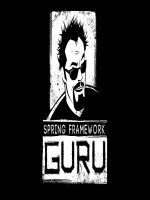bsd hacks kho tài liệu training
Bạn đang xem bản rút gọn của tài liệu. Xem và tải ngay bản đầy đủ của tài liệu tại đây (2.03 MB, 278 trang )
Contents
1. main
2. Table of Contents
3. Credits
4. About the Author
5. Contributors
6. Acknowledgments
7. Preface
8. Why BSD Hacks?
9. How to Use this Book
10. How This Book Is Organized
11. Conventions Used in This Book
12. Using Code Examples
13. We'd Like to Hear from You
14. Chapter 1. Customizing the User Environment
15. Hack 0 Introduction
16. Hack 1 Get the Most Out of the Default Shell
17. Hack 2 Useful tcsh Shell Configuration File Options
18. Hack 3 Create Shell Bindings
19. Hack 4 Use Terminal and X Bindings
20. Hack 5 Use the Mouse at a Terminal
21. Hack 6 Get Your Daily Dose of Trivia
22. Hack 7 Lock the Screen
23. Hack 8 Create a Trash Directory
24. Hack 9 Customize User Configurations
25. Hack 10 Maintain Your Environment on Multiple Systems
26. Hack 11 Use an Interactive Shell
27. Hack 12 Use Multiple Screens on One Terminal
28. Chapter 2. Dealing with Files and Filesystems
29. Hack 12 Introduction
30. Hack 13 Find Things
31. Hack 14 Get the Most Out of grep
32. Hack 15 Manipulate Files with sed
33. Hack 16 Format Text at the Command Line
34. Hack 17 Delimiter Dilemma
35. Hack 18 DOS Floppy Manipulation
36. Hack 19 Access Windows Shares Without a Server
37. Hack 20 Deal with Disk Hogs
38. Hack 21 Manage Temporary Files and Swap Space
39. Hack 22 Recreate a Directory Structure Using mtree
40. Hack 23 Ghosting Systems
41. Chapter 3. The Boot and Login Environments
42. Introduction
43. Hack 24 Customize the Default Boot Menu
44. Hack 25 Protect the Boot Process
45. Hack 26 Run a Headless System
46. Hack 27 Log a Headless Server Remotely
47. Hack 28 Remove the Terminal Login Banner
48. Hack 29 Protecting Passwords With Blowfish Hashes
49. Hack 30 Monitor Password Policy Compliance
50. Hack 31 Create an Effective, Reusable Password Policy
51. Hack 32 Automate Memorable Password Generation
52. Hack 33 Use One Time Passwords
53. Hack 34 Restrict Logins
54. Chapter 4. Backing Up
55. Introduction
56. Hack 35 Back Up FreeBSD with SMBFS
57. Hack 36 Create Portable POSIX Archives
58. Hack 37 Interactive Copy
59. Hack 38 Secure Backups Over a Network
60. Hack 39 Automate Remote Backups
61. Hack 40 Automate Data Dumps for PostgreSQL Databases
62. Hack 41 Perform Client-Server Cross-Platform Backups with Bacula
63. Chapter 5. Networking Hacks
64. Introduction
65. Hack 42 See Console Messages Over a Remote Login
66. Hack 43 Spoof a MAC Address
67. Hack 44 Use Multiple Wireless NIC Configurations
68. Hack 45 Survive Catastrophic Internet Loss
69. Hack 46 Humanize tcpdump Output
70. Hack 47 Understand DNS Records and Tools
71. Hack 48 Send and Receive Email Without a Mail Client
72. Hack 49 Why Do I Need sendmail?
73. Hack 50 Hold Email for Later Delivery
74. Hack 51 Get the Most Out of FTP
75. Hack 52 Distributed Command Execution
76. Hack 53 Interactive Remote Administration
77. Chapter 6. Securing the System
78. Introduction
79. Hack 54 Strip the Kernel
80. Hack 55 FreeBSD Access Control Lists
81. Hack 56 Protect Files with Flags
82. Hack 57 Tighten Security with Mandatory Access Control
83. Hack 58 Use mtree as a Built-in Tripwire
84. Hack 59 Intrusion Detection with Snort, ACID, MySQL, and FreeBSD
85. Hack 60 Encrypt Your Hard Disk
86. Hack 61 Sudo Gotchas
87. Hack 62 sudoscript
88. Hack 63 Restrict an SSH server
89. Hack 64 Script IP Filter Rulesets
90. Hack 65 Secure a Wireless Network Using PF
91. Hack 66 Automatically Generate Firewall Rules
92. Hack 67 Automate Security Patches
93. Hack 68 Scan a Network of Windows Computers for Viruses
94. Chapter 7. Going Beyond the Basics
95. Introduction
96. Hack 69 Tune FreeBSD for Different Applications
97. Hack 70 Traffic Shaping on FreeBSD
98. Hack 71 Create an Emergency Repair Kit
99. Hack 72 Use the FreeBSD Recovery Process
100. Hack 73 Use the GNU Debugger to Analyze a Buffer Overflow
101. Hack 74 Consolidate Web Server Logs
102. Hack 75 Script User Interaction
103. Hack 76 Create a Trade Show Demo
104. Chapter 8. Keeping Up-to-Date
105. Introduction
106. Hack 77 Automated Install
107. Hack 78 FreeBSD from Scratch
108. Hack 79 Safely Merge Changes to /etc
109. Hack 80 Automate Updates
110. Hack 81 Create a Package Repository
111. Hack 82 Build a Port Without the Ports Tree
112. Hack 83 Keep Ports Up-to-Date with CTM
113. Hack 84 Navigate the Ports System
114. Hack 85 Downgrade a Port
115. Hack 86 Create Your Own Startup Scripts
116. Hack 87 Automate NetBSD Package Builds
117. Hack 88 Easily Install Unix Applications on Mac OS X
118. Chapter 9. Grokking BSD
119. Introduction
120. Hack 89 How'd He Know That?
121. Hack 90 Create Your Own Manpages
122. Hack 91 Get the Most Out of Manpages
123. Hack 92 Apply, Understand, and Create Patches
124. Hack 93 Display Hardware Information
125. Hack 94 Determine Who Is on the System
126. Hack 95 Spelling Bee
127. Hack 96 Leave on Time
128. Hack 97 Run Native Java Applications
129. Hack 98 Rotate Your Signature
130. Hack 99 Useful One-Liners
131. 9.13 Fun with X
132. index
133. index_SYMBOL
134. index_A
135. index_B
136. index_C
137. index_D
138. index_E
139. index_F
140. index_G
141. index_H
142. index_I
143. index_J
144. index_K
145. index_L
146. index_M
147. index_N
148. index_O
149. index_P
150. index_Q
151. index_R
152. index_S
153. index_T
154. index_U
155. index_V
156. index_W
157. index_X
158. index_Y
159. index_Z
< Day Day Up >
Table of Contents
Index
Reviews
Reader Reviews
Errata
Academic
BSD Hacks
By Dru Lavigne
Publisher: O'Reilly
Pub Date: May 2004
ISBN: 0-596-00679-9
Pages: 300
Looking for a unique set of practical tips, tricks, and tools for
administrators and power users of BSD systems? From hacks to
customize the user environment to networking, securing the system, and
optimization, BSD Hacks takes a creative approach to saving time and
accomplishing more with fewer resources. If you want more than the
average BSD user--to explore and experiment, unearth shortcuts,
create useful tools--this book is a must-have.
< Day Day Up >
< Day Day Up >
Table of Contents
Index
Reviews
Reader Reviews
Errata
Academic
BSD Hacks
By Dru Lavigne
Publisher: O'Reilly
Pub Date: May 2004
ISBN: 0-596-00679-9
Pages: 300
Credits
About the Author
Contributors
Acknowledgments
Preface
Why BSD Hacks?
How to Use this Book
How This Book Is Organized
Conventions Used in This Book
Using Code Examples
We'd Like to Hear from You
Chapter 1. Customizing the User Environment
Section 0. Introduction
Section 1. Get the Most Out of the Default Shell
Section 2. Useful tcsh Shell Configuration File Options
Section 3. Create Shell Bindings
Section 4. Use Terminal and X Bindings
Section 5. Use the Mouse at a Terminal
Section 6. Get Your Daily Dose of Trivia
Section 7. Lock the Screen
Section 8. Create a Trash Directory
Section 9. Customize User Configurations
Section 10. Maintain Your Environment on Multiple Systems
Section 11. Use an Interactive Shell
Section 12. Use Multiple Screens on One Terminal
Chapter 2. Dealing with Files and Filesystems
Section 12. Introduction
Section 13. Find Things
Section 14. Get the Most Out of grep
Section 15. Manipulate Files with sed
Section 16. Format Text at the Command Line
Section 17. Delimiter Dilemma
Section 18. DOS Floppy Manipulation
Section 19. Access Windows Shares Without a Server
Section 20. Deal with Disk Hogs
Section 21. Manage Temporary Files and Swap Space
Section 22. Recreate a Directory Structure Using mtree
Section 23. Ghosting Systems
Chapter 3. The Boot and Login Environments
Introduction
Section 24. Customize the Default Boot Menu
Section 25. Protect the Boot Process
Section 26. Run a Headless System
Section 27. Log a Headless Server Remotely
Section 28. Remove the Terminal Login Banner
Section 29. Protecting Passwords With Blowfish Hashes
Section 30. Monitor Password Policy Compliance
Section 31. Create an Effective, Reusable Password Policy
Section 32. Automate Memorable Password Generation
Section 33. Use One Time Passwords
Section 34. Restrict Logins
Chapter 4. Backing Up
Introduction
Section 35. Back Up FreeBSD with SMBFS
Section 36. Create Portable POSIX Archives
Section 37. Interactive Copy
Section 38. Secure Backups Over a Network
Section 39. Automate Remote Backups
Section 40. Automate Data Dumps for PostgreSQL Databases
Section 41. Perform Client-Server Cross-Platform Backups with
Bacula
Chapter 5. Networking Hacks
Introduction
Section 42. See Console Messages Over a Remote Login
Section 43. Spoof a MAC Address
Section 44. Use Multiple Wireless NIC Configurations
Section 45. Survive Catastrophic Internet Loss
Section 46. Humanize tcpdump Output
Section 47. Understand DNS Records and Tools
Section 48. Send and Receive Email Without a Mail Client
Section 49. Why Do I Need sendmail?
Section 50. Hold Email for Later Delivery
Section 51. Get the Most Out of FTP
Section 52. Distributed Command Execution
Section 53. Interactive Remote Administration
Chapter 6. Securing the System
Introduction
Section 54. Strip the Kernel
Section 55. FreeBSD Access Control Lists
Section 56. Protect Files with Flags
Section 57. Tighten Security with Mandatory Access Control
Section 58. Use mtree as a Built-in Tripwire
Section 59. Intrusion Detection with Snort, ACID, MySQL, and
FreeBSD
Section 60. Encrypt Your Hard Disk
Section 61. Sudo Gotchas
Section 62. sudoscript
Section 63. Restrict an SSH server
Section 64. Script IP Filter Rulesets
Section 65. Secure a Wireless Network Using PF
Section 66. Automatically Generate Firewall Rules
Section 67. Automate Security Patches
Section 68. Scan a Network of Windows Computers for Viruses
Chapter 7. Going Beyond the Basics
Introduction
Section 69. Tune FreeBSD for Different Applications
Section 70. Traffic Shaping on FreeBSD
Section 71. Create an Emergency Repair Kit
Section 72. Use the FreeBSD Recovery Process
Section 73. Use the GNU Debugger to Analyze a Buffer Overflow
Section 74. Consolidate Web Server Logs
Section 75. Script User Interaction
Section 76. Create a Trade Show Demo
Chapter 8. Keeping Up-to-Date
Introduction
Section 77. Automated Install
Section 78. FreeBSD from Scratch
Section 79. Safely Merge Changes to /etc
Section 80. Automate Updates
Section 81. Create a Package Repository
Section 82. Build a Port Without the Ports Tree
Section 83. Keep Ports Up-to-Date with CTM
Section 84. Navigate the Ports System
Section 85. Downgrade a Port
Section 86. Create Your Own Startup Scripts
Section 87. Automate NetBSD Package Builds
Section 88. Easily Install Unix Applications on Mac OS X
Chapter 9. Grokking BSD
Introduction
Section 89. How'd He Know That?
Section 90. Create Your Own Manpages
Section 91. Get the Most Out of Manpages
Section 92. Apply, Understand, and Create Patches
Section 93. Display Hardware Information
Section 94. Determine Who Is on the System
Section 95. Spelling Bee
Section 96. Leave on Time
Section 97. Run Native Java Applications
Section 98. Rotate Your Signature
Section 99. Useful One-Liners
Section 9.13. Fun with X
Index
< Day Day Up >
< Day Day Up >
Credits
•
About the Author
•
Contributors
•
Acknowledgments
< Day Day Up >
< Day Day Up >
About the Author
Dru Lavigne is the author of ONLamp.com's FreeBSD Basics column
and has been an avid BSD user since FreeBSD 2.2.1. As an IT
instructor, she specializes in networking, routing, and security. She is
also responsible for ISECOM's Protocol Database, which can be
found at .
< Day Day Up >
< Day Day Up >
Contributors
The following people contributed their hacks, writing, and inspiration to
this book:
•
•
John Richard, known locally as JR, is a system administrator in
Kingston, Ontario, Canada. His trademark in the field is his
insistence on a FreeBSD box as the primary firewall on a
network. He has enjoyed working with the author in the past at
a private college in Kingston. In his spare time, he experiments
with FreeBSD and rides his Harley-Davidson.
•
•
[Hack #64]
•
Joe Warner is a Technical Analyst for Siemens Medical
Solutions Health Services Corporation and has been using
FreeBSD as a server and desktop since October of 2000. Joe
has lived in Salt Lake City, Utah for most of his life and enjoys
*BSD, computing, history, and The Matrix.
•
•
[Hacks #35 and #59]
•
Dan Langille ( runs a consulting group
in Ottawa, Canada. He has fond memories of his years in New
Zealand, where the climate is much more conducive to
year-round mountain biking. He lives in a house ruled by felines.
•
•
[Hack #41]
•
Robert Bernier's professional career has included engineering,
accident investigation, and Olympic trials. In the 1980s, his
interest returned to IT when he realized he wouldn't have to use
a punch card anymore. Eventually he discovered Linux and by
the mid-1990s had developed a passion for all things open
source. Today, Robert teaches at the local community college
and writes for a number of IT publications based in North
America and Europe.
•
•
[Hack #12]
•
Kirk Russell () is a kernel tester at QNX
Software Systems ( />
< Day Day Up >
< Day Day Up >
Acknowledgments
I would like to thank the many BSD and open source users who so
willingly shared their experiences, ideas, and support. You serve as a
constant reminder that BSD is more than an operating system—it is a
community.
I would also like to thank all of my students and the readers of the
FreeBSD Basics column. Your questions and feedback fuel my
curiosity; may this book return that favor.
Thanks to David Lents and Rob Flickenger for reviews and advice.
Special thanks to Jacek Artymiak for his invaluable input from the
OpenBSD and NetBSD perspectives. And finally, special thanks to
chromatic. A writer couldn't have asked for a better editor.
< Day Day Up >
< Day Day Up >
Preface
"What was it about UNIX that won my heart? . . . UNIX is
mysterious when you first approach. A little intimidating, too. But
despite an unadorned and often plain presentation, the discerning
suitor can tell there's lot going on under the surface."
—Thomas Scoville, />
When the above-mentioned article was first published, I was still very
much a BSD newbie. My spare hours were spent struggling with kernel
recompiles, PPP connectivity (or lack thereof), rm and chmod
disasters, and reading and rereading every bit of the then available
documentation. Yet, that article gave voice to my experience, for, like
the quoted author, I had stumbled upon operating system love. In other
words, I was discovering how to hack on BSD.
Since then, I've learned that there is an unspoken commonality between
the novice Unix user and the seasoned guru. It doesn't matter whether
you've just survived your first successful installation or you've just
executed a complex script that will save your company time and
money, the feeling is the same. It's the excitement of venturing into
unknown territory and discovering something new and wonderful. It's
that sense of accomplishment that comes with figuring something out for
yourself, with finding your own solution to the problem at hand.
This book contains 100 hacks written by users who love hacking with
BSD. You'll find hacks suited to both the novice user and the seasoned
veteran, as well as everyone in between. Read them in any order that
suits your purpose, but keep the "onion principle" in mind. While each
hack does present at least one practical solution to a problem, that's
just the outer layer. Use your imagination to peel away deeper layers,
exposing new solutions as you do so.
< Day Day Up >
< Day Day Up >
Why BSD Hacks?
The term hacking has an unfortunate reputation in the popular press,
where it often refers to someone who breaks into systems or wreaks
havoc with computers. Among enthusiasts, on the other hand, the term
hack refers to a "quick-n-dirty" solution to a problem or a clever way
to do something. The term hacker is very much a compliment, praising
someone for being creative and having the technical chops to get things
done. O'Reilly's Hacks series is an attempt to reclaim the word,
document the ways people are hacking (in a good way), and pass the
hacker ethic of creative participation on to a new generation of
hackers. Seeing how others approach systems and problems is often
the quickest way to learn about a new technology.
BSD Hacks is all about making the most of your BSD system. The
BSDs of today have a proud lineage, tracing back to some of the
original hackers—people who built Unix and the Internet as we know it
today. As you'd expect, they faced many problems and solved
problems both quickly and elegantly. We've collected some of that
wisdom, both classic and modern, about using the command line,
securing systems, keeping track of your files, making backups, and,
most importantly, how to become your own BSD guru along the way.
< Day Day Up >
< Day Day Up >
How to Use this Book
One of the beauties of Unix is that you can be very productive with
surprisingly little knowledge. Even better, each new trick you learn can
shave minutes off of your day. We've arranged the chapters in this
book by subject area, not by any suggested order of learning. Skip
around to what interests you most or solves your current problem. If
the current hack depends on information in another hack, we'll include
a link for you to follow.
Furthermore, the "See Also" sections at the end of individual hacks
often include references such as man fortune. These refer to the manual
pages installed on your machine. If you're not familiar with these
manpages, start with [Hack #89] .
< Day Day Up >
< Day Day Up >
How This Book Is Organized
To master BSD, you'll have to understand several topics. We've
arranged the hacks loosely into chapters. They are:
Chapter 1Customizing the User Environment
Though modern BSDs have myriad graphical applications and utilities,
the combined wisdom of 35 years of command-line programs is just a
shell away. This chapter demonstrates how to make the most of the
command line, customizing it to your needs and preferences.
Chapter 2Dealing with Files and Filesystems
What good is knowing Unix commands if you have no files? You have
to slice, dice, and store data somewhere. This chapter explains
techniques for finding and processing information, whether it's on your
machine or on a server elsewhere.
Chapter 3The Boot and Login Environments
The best-laid security plans of administrators often go out the window
when users enter the picture. Keeping the bad guys off of sensitive
machines requires a two-pronged approach: protecting normal user
accounts through good password policies and protecting the boxes
physically. This chapter explores several options for customizing and
securing the boot and login processes.
Chapter 4Backing Up
After you start creating files, you're bound to run across data you can't
afford to lose. That's where backups come in. This chapter offers
several ideas for various methods of ensuring that your precious data
will persist in the face of tragedy.
Chapter 5Networking Hacks
Unless you're a die-hard individualist, you're likely connected to a
network. That fact presents several new opportunities for clever hacks
< Day Day Up >
< Day Day Up >
Conventions Used in This Book
This book uses the following typographical conventions:
Italic
Indicates new terms, URLs, email addresses, filenames, pathnames,
and directories.
Constant width
Indicates commands, options, switches, variables, attributes, functions,
user and group names, the contents of files, and the output from
commands.
Constant width bold
In code examples, shows commands or other text that should be typed
literally by the user.
Constant width italic
Shows text that should be replaced with user-supplied values.
Color
The second color is used to indicate a cross-reference within the text.
This icon signifies a tip, suggestion, or general
note.
This icon indicates a warning or caution.
< Day Day Up >
< Day Day Up >
Using Code Examples
This book is here to help you get your job done. In general, you may
use the code in this book in your programs and documentation. You do
not need to contact us for permission unless you're reproducing a
significant portion of the code. For example, writing a program that
uses several chunks of code from this book does not require
permission. Selling or distributing a CD-ROM of examples from
O'Reilly books does require permission. Answering a question by citing
this book and quoting example code does not require permission.
Incorporating a significant amount of example code from this book into
your product's documentation does require permission.
We appreciate, but do not require, attribution. An attribution usually
includes the title, author, publisher, and ISBN, for example: "BSD
Hacks by Dru Lavigne. Copyright 2004 O'Reilly Media, Inc.,
0-596-00679-9."
If you feel your use of code examples falls outside fair use or the
permission given here, feel free to contact us at
< Day Day Up >
< Day Day Up >
We'd Like to Hear from You
Please address comments and questions concerning this book to the
publisher:
O'Reilly Media, Inc. 1005 Gravenstein Highway North Sebastopol,
CA 95472 (800) 998-9938 (in the United States or Canada)(707)
829-0515 (international or local) (707) 829-0104 (fax)
We have a web page for this book, where we list errata, examples, and
any additional information. You can access this page at:
/>To comment or ask technical questions about this book, send email to:
For more information about our books, conferences, Resource
Centers, and the O'Reilly Network, see our web site at:
/>< Day Day Up >
< Day Day Up >
Chapter 1. Customizing the
User Environment
•
Section 0. Introduction
•
Section 1. Get the Most Out of the Default Shell
•
Section 2. Useful tcsh Shell Configuration File Options
•
Section 3. Create Shell Bindings
•
Section 4. Use Terminal and X Bindings
•
Section 5. Use the Mouse at a Terminal
•
Section 6. Get Your Daily Dose of Trivia
•
Section 7. Lock the Screen
•
Section 8. Create a Trash Directory
•
Section 9. Customize User Configurations
•
Section 10. Maintain Your Environment on Multiple Systems
•
Section 11. Use an Interactive Shell
•
Section 12. Use Multiple Screens on One Terminal
< Day Day Up >
< Day Day Up >
Hack 0 Introduction
Users of open source () Unix operating systems
are an interesting breed. They like to poke under the surface of things,
to find out how things work, and to figure out new and interesting ways
of accomplishing common computing tasks. In short, they like to "hack."
While this book concentrates on the BSDs, many of the hacks apply to
any open source operating system. Each hack is simply a
demonstration of how to examine a common problem from a slightly
different angle. Feel free to use any of these hacks as a springboard to
your own customized solution. If your particular operating system
doesn't contain the tool used in the solution, use a tool that does exist,
or invent your own!
This chapter provides many tools for getting the most out of your
working environment. You'll learn how to make friends with your shell
and how to perform your most common tasks with just a few
keystrokes or mouse clicks. You'll also uncover tricks that can help
prevent command-line disasters. And, above all, you'll discover that
hacking BSD is fun. So, pull your chair up to your operating system of
choice and let's start hacking.
< Day Day Up >
< Day Day Up >









